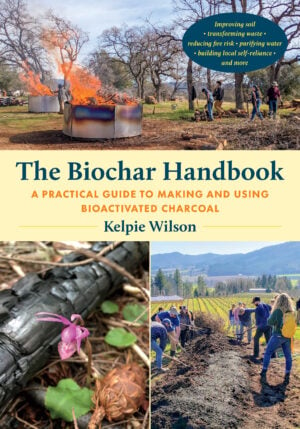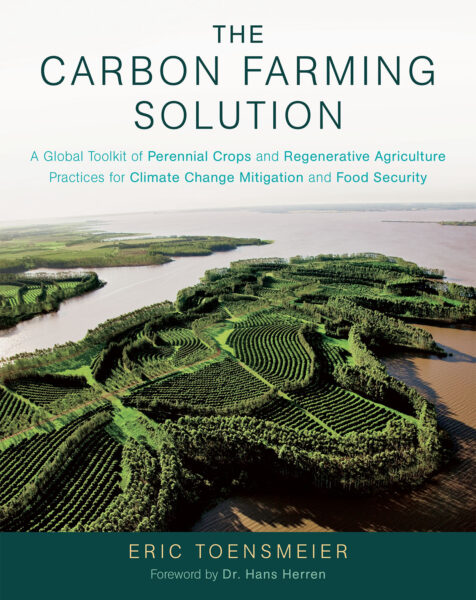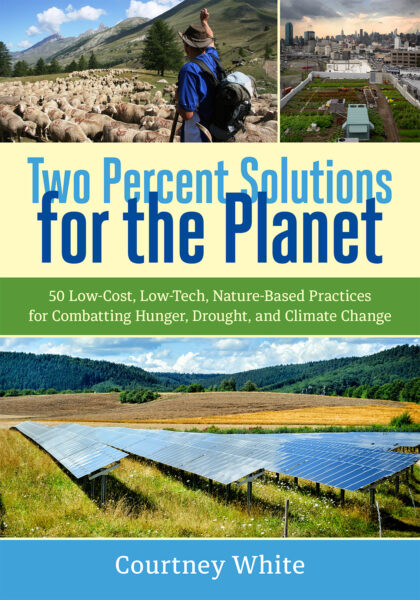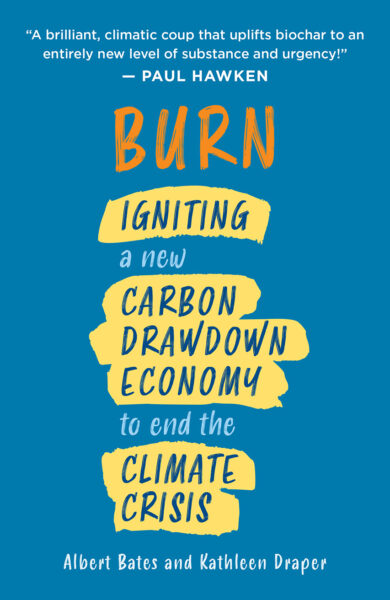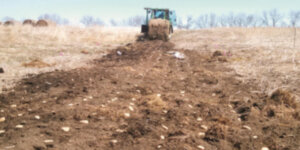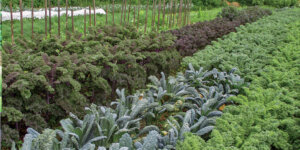Land Degradation: The Secrets of Fixing the Soil with Biochar
Some of the world’s most productive and resilient soils contain significant quantities of “natural” biochar. Author Kelpie Wilson challenges us to “change our perspective from ‘too much carbon in the air’ to ‘not enough carbon in the soil.’ We are good at being miners and exploiting resources, so let’s mine the air and stash the carbon back in our soil.”
Burning organic material in a low-oxygen, low-emission environment could be one of the most powerful tools to restore degraded soils and reduce our dependence on fossil fuels.
The following is an excerpt from The Biochar Handbook by Kelpie Wilson. It has been adapted for the Web.
Scope of Land Degradation
Land degradation is a huge global problem affecting all continents. According to the UN Food and Agriculture Organization (FAO), hotspots for land degradation are along the west coast of the Americas, across southern Europe and North Africa, the Sahel and the Horn of Africa, and throughout Asia. More recently, out of 1600 million hectares of cultivated land, the FAO finds that 34 percent of land is in a critically degraded condition and is being further degraded.
Only 11 percent of the global land surface is considered to be suitable for producing crops. This small slice of land must feed the current and future population. The amount of arable land cannot be increased without causing further degradation, so the only hope of maintaining production is to rehabilitate the degraded lands.
Land degradation is defined as the loss of productivity or utility. In the context of productivity, land degradation can result from a mismatch between land quality and land use. Some lands are more resilient than others to the impacts of farming, logging, grazing, and other uses. Land degradation includes physical, chemical, and biological processes. It begins when natural land is cleared for agriculture or when domestic grazing animals are introduced.
Globally, the loss of soil carbon is huge.
The first impact is a loss of carbon both aboveground and below ground in the form of plant biomass, soil biota biomass, and decomposing soil organic matter. Most agricultural soils have lost between 25 percent and 75 percent of their soil carbon in the last five decades.
Methods of water use are related to the degradation of soils and watersheds. Irrigation can cause soil salinity by depositing salts in the root zone of plants that are difficult to flush out. Conversely, agricultural chemicals are liable to leach out of the root zone into groundwater, causing eutrophication and toxic contamination of water bodies. Industrial processes and development also degrade land. Air and water pollution, mining, and urbanization have all contributed to degrading the land that could otherwise be used for agriculture or to provide ecosystem services.
Fixing Soil
One of the first and most important tasks for biochar is to help repair the vast amount of degraded and damaged land. It is natural to think of biochar as an agent for restoring degraded land because of its history of use. Native people in the Amazon rainforest mixed charcoal with human waste and kitchen waste to form the highly fertile soils known as terra preta. These soils are a prime example of the relationship between marginal land, agriculture, ecosystem services, and degraded land.
Tropical rainforests are regarded as land that is marginal for agriculture. Soils are highly leached and low in soil organic matter, yet they support biologically diverse forest ecosystems that provide important services such as water, carbon storage, and climate regulation, among others. Tropical lands are marginal for agriculture but perfectly suitable for biologically diverse forests. Converting such lands to agriculture on a large scale inevitably leads to a long-term loss of carbon storage and ecosystem services.
On a small scale, however, native Amazonians were able to use these lands for agriculture without degrading the soils because of their biochar amendments. This example should be used not to justify clearing more primary forest for agriculture (these forests are badly needed for providing ecosystem services) but as a model for restoring the millions of hectares of soils that have already been degraded by human activities.
Biochar can help restore degraded land and improve marginal land for agriculture and ecosystem services. Table 14.1 lists some of the areas where biochar can improve soils and summarizes the mechanisms by which it acts. In addition to improving soils in general by providing carbon, water-holding capacity, and habitat for soil life, biochar can be helpful with some specific soil problems that we face if we are to fix our most damaged soils.
Soil Compaction and Erosion
Biochar reduces the bulk density and tensile strength of soil while encouraging root growth. It helps soil to form aggregates of soil organic and mineral particles that result in improved soil structure for root penetration and water-holding capacity. These properties can help alleviate soil compaction and present a defense against erosion as root growth takes hold. A study of highly erodible soils on the Loess Plateau, China, found that biochar enhanced the formation of soil aggregates of silt loam soils, potentially increasing soil stability and reducing soil erosion.
pH IMBALANCE—ACID SOILS
On acid soils, biochar can have a liming effect while also increasing cation exchange capacity. A study of phosphorus uptake on acid soils found that the liming effect of biochar resulted in greater plant uptake of phosphorus. USDA researchers working with sandy acid soils in the US Coastal Plain region found that biochar increased soil pH, soil organic carbon, calcium, potassium, manganese, and phosphorus.
pH IMBALANCE—ALKALINE SOILS
Even when the biochar itself is alkaline, it can buffer alkaline soils because of acid functional groups on biochar surfaces created by soil microbes. An incubation study using soils from the Loess Plateau in China found that adding an alkaline biochar to alkaline soils reduced pH over several months. Some moderation of the soil salinization process was also observed.
SALINIZATION
Biochar can alleviate soil salinization through several mechanisms. By improving soil water-holding capacity, it can form a moisture-retaining upper soil horizon in the plant root zone.16 A two-year field study of biochar in saltstressed cropland in China found that biochar significantly improved seed germination, crop yield, and soil quality.17 Biochar alleviated soil compaction, encouraging the leaching of salt. It may also have immobilized some salt, making it unavailable to plants. The beneficial effects of biochar persisted and even increased in the second year of cropping, without any additional biochar application. A meta-analysis confirmed that these results were replicated by other studies, and furthermore that biochar increased the amount of microbial activity in salt-affected soils resulting in improved plant growth.
TOXIC CONTAMINATION
A multitude of studies have shown that biochar can sorb many different kinds of contaminants and either degrade them or immobilize them. In some cases, the liming effects of biochar can increase mobility of arsenic, but one study showed that even though arsenic mobility increased, its uptake to plant tissues was reduced. Biochar can revitalize soils contaminated with lead. This has important implications for the use of soils for urban agriculture where lead contamination is a major limitation. Other types of soil contamination can also be ameliorated with biochar, including PCBs, heavy metals, and pesticides.
Biochar can also promote the degradation of pollutants. A study that looked at biochar as a tool for cleaning oil spills found that biochar reduced volatile emissions and accelerated the microbial degradation of volatile hydrocarbons in a sandy soil. Mine tailings are a long-term source of pollutants that need to be remediated through revegetation. Biochar has been shown to be effective in promoting revegetation and reducing the leaching of toxicants from mine tailings.
Dominion or Reverence?
This is not our first rodeo with ecocatastrophe. We humans have been here before. In his book Out of the Earth, soil scientist Daniel Hillel gives us a history of human agriculture and soil degradation. This history is written on the land and easy to see, for a soil scientist. Hillel says, “The poor condition of the ‘Fertile Crescent’ today is due not simply to changing climate or the devastations caused by repeated wars. . . . It is due in large part to the prolonged exploitation of this fragile environment by generations of forest cutters and burners, grazers, cultivators, and irrigators, all diligent and well intentioned but destructive nonetheless.”
Farming almost always degrades soil, and modern farming practices are the most destructive of all.
There are two schools of thought about how to fix this. One school wants to industrialize agriculture even more and bring it under centralized control in the name of sustainability and climate change. They would eliminate meat and milk, for instance, and grow protein in factories. But centralized and highly mechanized industrial agriculture, and the global supply chains it depends on, have no future. The reason is simple: energy.
The world will likely reach peak oil production—from all forms of oil: conventional (light, sweet crude) and unconventional (tar sands, oil shale, heavy oil)—sometime before 2030. There will still be oil left in the ground, but the cost of extracting it will become increasingly unaffordable as ERoEI (energy return on energy invested) plummets. It is all downhill from here, in terms of the energy that will be available to us to power our civilization going forward. Wind, solar, and other non-fossil-fuel energy sources cannot fill the gap. Actuary Gail Tverberg explains all the reasons why in an article titled “Models Hide the Shortcomings of Wind and Solar.”
Economist Nate Hagens is a current leader in the discussions around our energy future. He predicts a “great simplification” as energy costs go up and availability goes down. He has an illustrative example in agriculture: how to milk cows.
Manual milking uses 120 hours of human labor per cow per year. Semiautomated machine milking uses 27 hours of human labor per cow per year, and fully automated milking machines require 12 hours of human labor per cow per year. The first method uses no electrical energy, the second method uses 1.1 megawatt-hours per cow per year, and the fully automated method uses 3 megawatt-hours per cow per year. A fully automated dairy with 5,000 cows would use 15,000 megawatt-hours per year just for milking machines.
The old way of milking cows used only human energy, and the return on the human energy invested was always positive. With cheap electricity available, automated milking improved the economic return on investment, but as energy costs go up, the returns diminish and even become negative.
The conclusions are inevitable. There will come a time in the future when only human energy will be affordable for many tasks.
The other school of thought on how to fix agriculture wants to relocalize farming and supply chains, to move slowly and deliberately down the off-ramp of energy descent while building properly scaled agriculture and industry to support people the best we can. Biochar has an important role to play in this approach to bioregional, local, and sustainable agriculture, energy, and waste management. Every human civilization on record has collapsed when it has exhausted its resource base. Unlike hunter-gatherer cultures that persisted for 100,000 years, agriculture has only been around for about 10,000 years and we still have not gotten it right.
Alternatives to Dominion
Why has every agricultural civilization either gone bust or been conquered by another civilization that was more aggressive? It’s tempting to call it a spiritual problem—we are guilty of hubris, of trying to be gods. Maybe that’s it, or maybe it’s just because we are like every other animal that will exploit every resource it can reach to feed itself and grow and multiply. Whatever the case, as we come up against the hard and fast limits to growth, there will be pain, followed by adaptation to our new, low-energy environment.
Is there any chance that we could get it right next time and give up the idea of dominion as we evolve a new social order beyond the Petroleum Age? I learned about biochar from others in the peak oil community of analysts and writers that emerged around 2005, when the world reached a peak in conventional oil production and people were talking about peak oil for the first time since the 1970s.
The good news is that the carbon we need in soils has not gone anywhere—it is still here in Earth’s atmosphere. Every one of us has the ability to work with plants to help them draw down this carbon to grow beautiful gardens again.
When it comes to climate change, let’s change our perspective from “too much carbon in the air” to “not enough carbon in the soil.”
We are good at being miners and exploiting resources, so let’s mine the air and stash the carbon back in our soil.
I hope this book has shown you some ways that biochar, and the example of the ancient charcoal cultures found in Brazil, Japan, and many other parts of the world, can help you in your quest for self-reliant sustainability, better food, and better health. And more than that, I hope you will find that biochar is a useful tool to help fulfill our mission as stewards of the Earth.
Recommended Reads
Recent Articles
If you want to improve your soil, one of the most important things you can do is to plant cover crops. But they need to be selected with a purpose.
Read MoreWeeds are the bane of every farmer and gardener’s existence. Before you go crusading against the weeds in your garden follow these tips and tricks!
Read MoreTry your hand at preserving veggies by freezing them! Freezing vegetables is a quick, simple way to preserve them for winter meals.
Read MoreCows can help rebuild soil and restore land to its rightful state—improving carbon sequestration, natural water cycles, and soil fertility and nutrient density.
Read MoreBecome more resilient when the temperatures are on the rise to reduce heat stress and produce food in even the most arid environments.
Read More
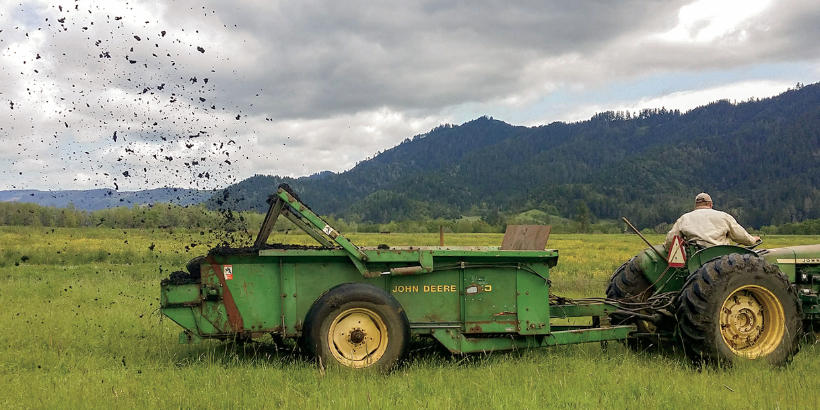
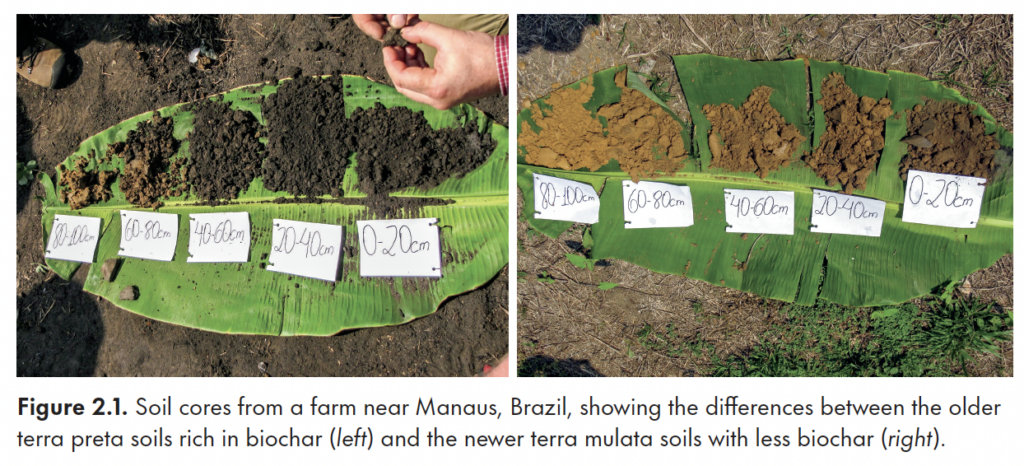
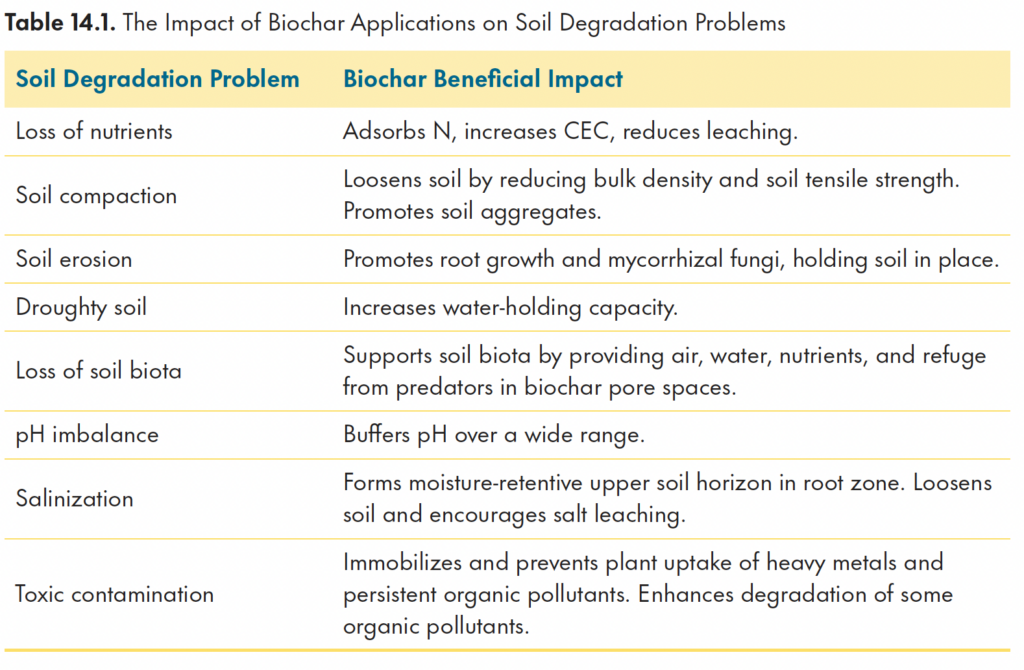
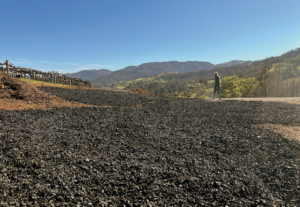 SALINIZATION
SALINIZATION There are two schools of thought about how to fix this. One school wants to industrialize agriculture even more and bring it under centralized control in the name of sustainability and climate change. They would eliminate meat and milk, for instance, and grow protein in factories. But centralized and highly mechanized industrial agriculture, and the global supply chains it depends on, have no future. The reason is simple: energy.
There are two schools of thought about how to fix this. One school wants to industrialize agriculture even more and bring it under centralized control in the name of sustainability and climate change. They would eliminate meat and milk, for instance, and grow protein in factories. But centralized and highly mechanized industrial agriculture, and the global supply chains it depends on, have no future. The reason is simple: energy.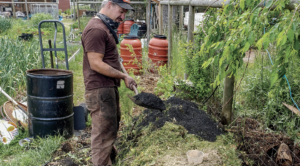 Why has every agricultural civilization either gone bust or been conquered by another civilization that was more aggressive? It’s tempting to call it a spiritual problem—we are guilty of hubris, of trying to be gods. Maybe that’s it, or maybe it’s just because we are like every other animal that will exploit every resource it can reach to feed itself and grow and multiply. Whatever the case, as we come up against the hard and fast limits to growth, there will be pain, followed by adaptation to our new, low-energy environment.
Why has every agricultural civilization either gone bust or been conquered by another civilization that was more aggressive? It’s tempting to call it a spiritual problem—we are guilty of hubris, of trying to be gods. Maybe that’s it, or maybe it’s just because we are like every other animal that will exploit every resource it can reach to feed itself and grow and multiply. Whatever the case, as we come up against the hard and fast limits to growth, there will be pain, followed by adaptation to our new, low-energy environment.